About MRC Arte

MRC Arte is a self-taught digital artist, who has been part of the crypto art movement since 2022. His work is driven by a singular vision: art must live fully on-chain, not stored in fragile servers or hidden behind broken links. For him, the blockchain is not just a medium—it is the canvas, the archive, and the resistance against forgetting.
Rejecting traditional paths, MRC Arte forges his own. His art emerges through glitches, fractured signals, and digital scars that mirror the instability of online life, yet remain indestructible once embedded on-chain. This duality—fragile in appearance, eternal in form—defines his ethos. He is not interested in trends or temporary recognition, but in creating works that will outlast both the machines that display them and the systems that try to contain them.
For MRC Arte, being on-chain is more than preservation—it is defiance. It is proof that art can exist without permission, without compromise, and without fear of being erased.
MRC Arte has an impressive collector base that includes many amazing artists and some of the largest and well known collectors in the digital art world.
An interview with MRC Arte led by Carlo Borloni


In your bio you state that “art must live fully on-chain.” How does this principle translate into the Renaissance.exe project and its dialogue with such a deeply rooted Italian Renaissance tradition?
For me, “art must live fully on-chain” means permanence, resilience, and truth. Just as the Renaissance sought eternal ideals through marble and fresco, Each of these works are fully minted on the Ethereum blockchain (i.e., the art resides on-chain and doesn't point to an external dependency). Renaissance.exe reimagines that search for permanence. The blockchain becomes my chapel ceiling, a place where memory, myth, and digital survival coexist.


The works start from archetypal Renaissance images, but they don’t simply reinterpret them: they become metamorphoses, collisions between ancient symbols and contemporary signs. How do you choose which elements to “insert” or “replace,” and what guides you in this transfiguration?
I don’t aim to “update” them; I fracture them, collide them with symbols from speculation, technology, and contemporary anxiety. The choice of what to replace—whether a saint’s hand, an animal, or a background—comes from an intuitive pull: what fractures the narrative most, what exposes the fragility behind the aura. My guide is tension: the place where beauty begins to crack.


In Madonna del Toro the ermine turns into a red bull, a symbol of strength, speculation, and faith. How important is the dialogue between sacred and profane, between spirituality and capitalism, within your artistic practice?
That tension is everything. The bull that replaces the ermine is at once sacred and speculative, as much a reliquary as a market ticker. This may be controversial but for me, spirituality and capitalism are not opposites, they are mirrors. Both demand faith, both create rituals, both seduce with promise. My work lives inside that belief.


In works such as Error 404: Salvation Not Found or Ascension Protocol, religion is “recoded” through the digital language. Is this gesture more critical or more visionary? Do you think the digital can become a new form of religion or cult?
When I “recoded” religion into digital languages, it wasn’t mockery, it was revelation. Is it critical? Yes. Visionary? Hopefully. But above all, it is necessary. Digital networks already carry their own dogmas, saints, and prophets. I see art as a way to make this visible: to reveal how easily technology takes on the weight of cult, how servers become cathedrals.


Many pieces, from Banquet of Shadows to Severance, reflect on the dynamics of power: who holds it, how it is transmitted, how it is concealed. What is your personal vision of power today, both in the art world and beyond?
Power today is no longer a crown but a current, shifting, concealed, and encoded in the systems we move through. In the art world, it drifts away from the old gatekeepers and into decentralized networks, where artists can inscribe their voices permanently on-chain and communities decide what resonates. Beyond art, it hides in algorithms, contracts, and invisible architectures that quietly shape reality, proving that the most powerful forces are often unseen. My vision of power is not about domination but authorship, the ability to write into the record, to bend systems toward new meanings, and to remain untethered from narratives imposed by others.


The series alternates between images of violence (decapitations, crucifixions) and moments of balance (Dual Devotion). Does this contrast also reflect your personal journey as an artist, between instability and the search for form?
The oscillation between brutality and balance reflects me as much as it reflects the world. I work in instability; I live in glitches. Yet, I also search for balance, moments where duality coexists rather than destroys. Dual Devotion is as much my self-portrait as any decapitation: the constant dance between chaos and form.


You are a self-taught artist and have been part of the crypto art movement since 2022. How has this independence allowed you to build such a personal language, far from temporary fashions and trends?
Being self-taught means no one set the rules for me, so I had to invent my own. That independence is a gift: it has allowed me to avoid fashions, resist certain styles, and speak with a voice that is fractured, raw, and unmistakably mine. The crypto art movement gave me a context, but I was never interested in chasing the “meta.” My language comes from outside the academy, but is influenced by the world around me. I think the challenge in this space is often artists fall in to the trap to make art they think people want versus what they want to make; this collection reflects my freedom to express myself.


You often speak of “compressionism” and glitches as vital signs of digital fragility. How do these aesthetic elements fit into a corpus that dialogues with the formal perfection of the Renaissance?
Compression artifacts and glitches are not flaws but truths, the digital equivalent of cracks in marble or weathering in frescoes, signs that every system carries its own mortality. Where the Renaissance sought harmony, proportion, and divine perfection, my work brings its reflection through the fractured lens of the network age: the ideal meeting the error. By letting glitches and compression shape the image, I stage a dialogue where Renaissance form is recompiled and refracted, not as nostalgia but as proof that beauty persists even when systems fail. It is precisely in this tension, between formal perfection and digital fragility, that a new kind of authenticity emerges.


Four Origins expands Michelangelo’s vision to include the human, the skeletal, the mechanical, and the alien. What fascinates you most about the idea of origin today? Do you see digital art as a new “act of creation” for humanity?
Four Origins is my attempt to widen the myth of creation. We are no longer only human: we are skeletal, machinic, alien. What fascinates me most about “origin” is that it’s always rewritten. Digital art itself is an act of genesis, it codes new forms of life into permanence. Each minting of art feels like a birth, an origin that belongs not to me, but to the chain.


Renaissance.exe is presented as “Chapter I.” This implies a longer journey. Can you give us a preview of how you imagine the next chapters and how you will continue to explore the dialogue between memory and future, sacred and digital?
I consider the Renaissance.exe as the first breach. The next chapter will likely move deeper into recursion: memory fracturing into protocol, relics dissolving into code, sacred images mutating into machine vision. If Chapter I is dialogue, Chapter II will be contagion. My art journey is to explore how art survives in digital catacombs, how memory itself becomes executable, refracted, and eternal.

Sign up for our newsletter to keep up with the latest news from NINFA
Sign up for our newsletter to keep up with the latest news from NINFA
Write us at: info@ninfa.io, or click here if you need support
Copyright © 2025 Ninfa Labs - 12094240962 - All rights reserved

